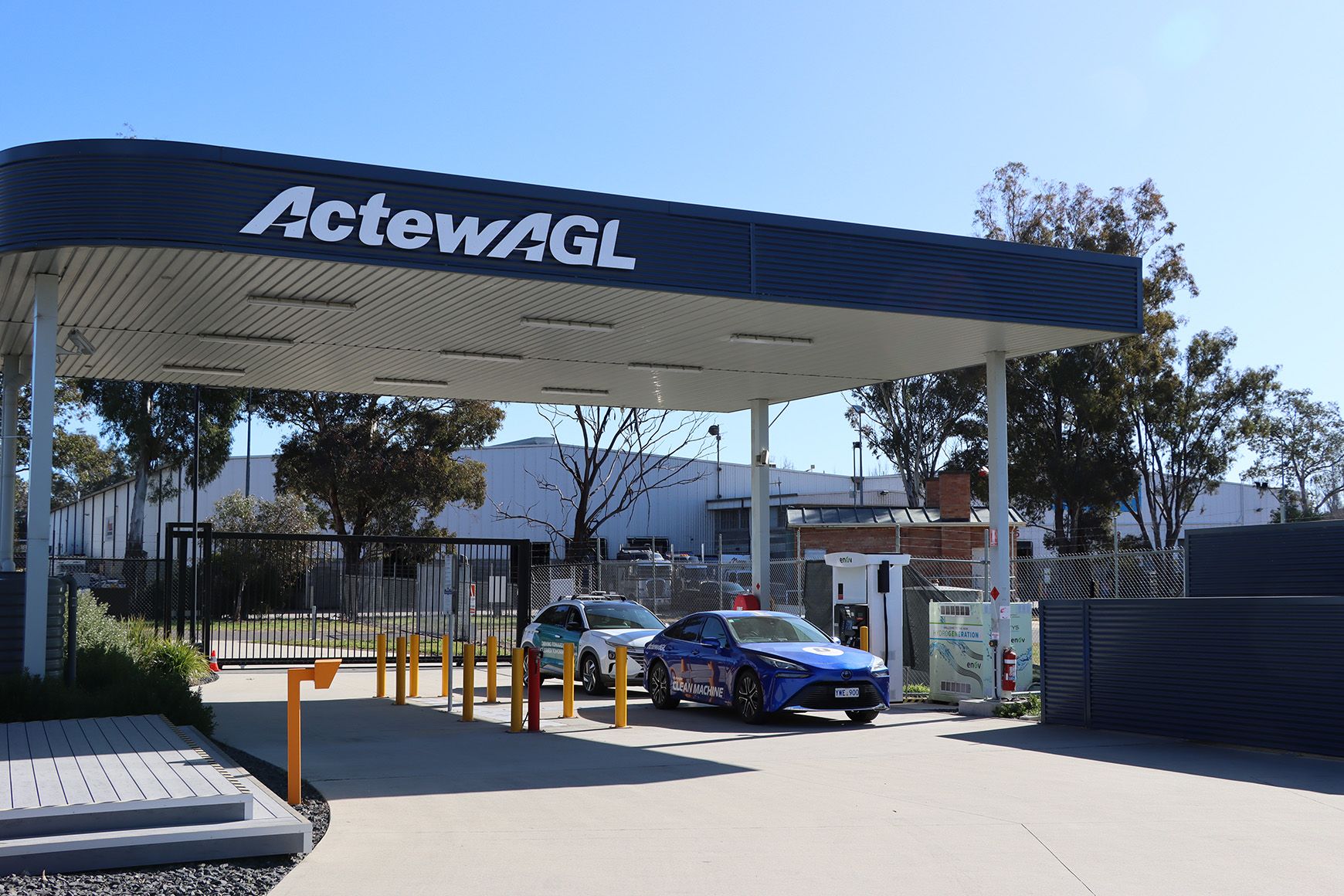As the world continues its transition away from fossil fuels a growing range of alternatives have become viable energy options.
Passenger and light vehicles represent around 11% of Australia's carbon emissions. For a long time, most of the world's vehicles have been petrol and diesel-driven; all the infrastructure is in place to service that approach, and it has long been the cheapest option available. But that's changing, and big changes deliver big opportunities.
The growing adoption of plug-in electric vehicles globally has led many to predict they will overtake petrol cars as the transport mode of choice in the not-too-distant future. However, advances in technology are also bringing hydrogen-powered vehicles into consideration.
Unlike other vehicles that combust a fuel source or use electricity stored in a battery, hydrogen powered vehicles produce their electricity onboard to power the motor. Hydrogen stored in a fuel cell is combined with oxygen from the air in a chemical reaction that creates electricity. The only by-product is water.
Leading automakers including Hyundai are investing heavily in the conviction hydrogen fuel cells have a place in the future.
In March 2021 Hyundai, ActewAGL, the ACT Government and renewable energy developer Neoen Australia teamed up to open and operate Australia's first public hydrogen refuelling station.
The Fyshwick (ACT) station produces and stores hydrogen on site and refuels the government fleet of 20 Hyundai Nexos.
ActewAGL's Group Manager Strategic Partners & Energy Solutions Sean Davis said the company had been investigating hydrogen as a future fuel for over 5 years and considered it highly likely to be part of the solution for zero emission transport. He noted all the hydrogen made and used at the station is certified by the Smart Energy Council as 'clean and green'.
“The ACT Government has legislated net zero emissions by 2045 - the leading jurisdiction in Australia,” he said.
“We're using an electrolyser on site – combining renewable grid electricity and water to generate the hydrogen; that's what the Smart Energy Council has certified. People can be confident they're filling up with green hydrogen.”
“When our storage gets low, we start producing. We can produce up to 22kg a day, just under 1kg an hour.”
Davis said the pilot project was working well.
“This is a 'pre-commercial' project,” he said.
“Establishing the station has allowed local technicians to get comfortable with the fuel. It also helps customers understand how the refuelling process works and become familiar with the vehicles.
“We've had a multitude of challenges just like any business or project operating during the pandemic. As the COVID restrictions reduce and things return to normal we are definitely seeing an increase in vehicle usage and, consequently, demand at the station.”
Davis said the hydrogen vehicles supplied by Hyundai drove well, had good range, and the future for this technology had great potential.
“In a blind test you'd be hard pressed to tell the difference between a battery electric car and a hydrogen fuel cell electric car,” he said.
“Manufacturers are now making or investigating a full range of transport equipment with fuel cells. In Australia we've only got the two passenger vehicle options but overseas there are B-Double trucks running, ferries, tractors, trains, boats, buses - all sorts of transport.”
Hydrogen fuel cell technology has come a long way since General Motors produced the world's first hydrogen-powered passenger vehicle in 1966. Today's Hyundai Nexo is rated for a travel distance of 666km, using 6.3 kg of hydrogen. Refuelling takes 3-5 minutes and, when using green hydrogen, no carbon emissions are released.
Giving the future of hydrogen fuels a boost, Hydrogen Fuels Australia and CLARA Energy, a developer of a large-scale green hydrogen production facility in Tarcutta NSW, recently announced a $600 million plan to build a green hydrogen distribution network along the Hume Highway corridor. Their first hydrogen refuelling station is scheduled to open in 2025.
The Clean Energy Regulator has an exciting role in Australia’s clean hydrogen future. A global Guarantee of Origin scheme, currently under trial in Australia, will measure how and where a unit of hydrogen is produced including its carbon intensity.
